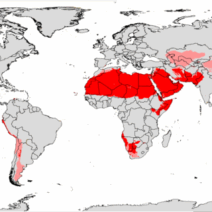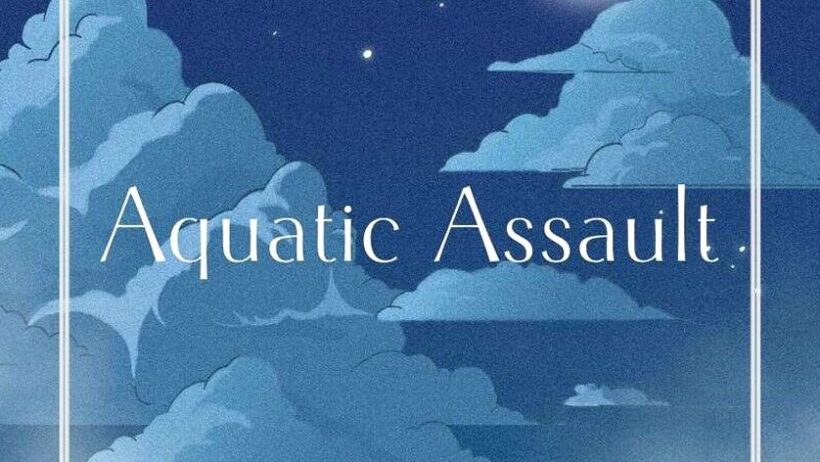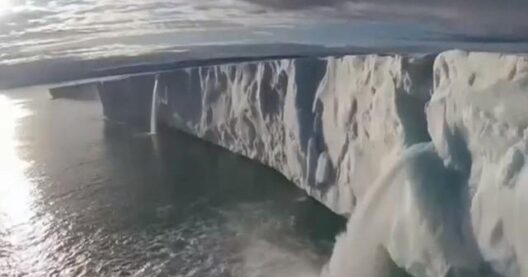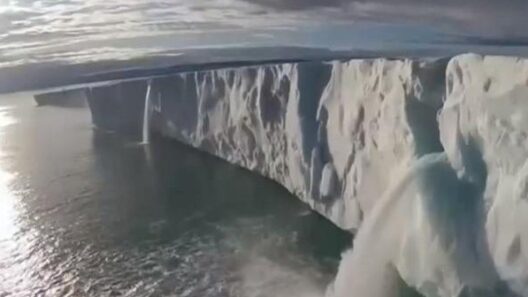As the planet undergoes a dramatic transformation due to climate change, our oceans are experiencing an unprecedented assault that reverberates through every layer of the aquatic ecosystem. These vast bodies of water, which cover more than 70% of the Earth’s surface, are not merely passive recipients of atmospheric changes. They are dynamic systems, teeming with life and complex interactions, now under siege from the vestiges of our industrialization and the inexorable rise in global temperatures.
At the forefront of this aquatic assault are the ice caps, those majestic and ethereal formations that have long served as indicators of planetary health. The polar regions, particularly Greenland and Antarctica, are retreating at an alarming pace. As these ice sheets melt, they contribute significantly to rising sea levels, which threaten coastal communities and ecosystems worldwide. This loss isn’t just a matter of geography; it’s a harbinger of altered ocean currents which play a pivotal role in climate regulation.
While the implications of melting ice caps are critical, they represent just a facet of the broader spectrum of changes occurring in our oceans. As temperatures continue to rise, the very chemistry of seawater is undergoing a transformation. Increased levels of carbon dioxide are leading to ocean acidification—a phenomenon that poses a considerable threat to calcifying organisms such as corals, mollusks, and some plankton species. The delicate balance of marine ecosystems is at stake, as the foundational building blocks of these food webs begin to crumble.
Your curiosity might lead you to ponder: how does this oceanic shift affect global biodiversity? The answer is profoundly complex. Coral reefs, often referred to as the rainforests of the sea, provide immense biodiversity and habitat for countless marine species. Yet, climate change manifests in phenomena such as coral bleaching—where stressed corals expel the symbiotic algae that give them color and nourishment. This process not only endangers the corals but also reverberates throughout the entire ecosystem, leading to a decline in fish populations that rely on these structures for shelter and sustenance.
Moreover, the warmer waters are fostering an environment that is conducive to invasive species, further complicating the ecology of established marine habitats. Many native species are losing their competitive edge, driving them toward local extinction. Invasive species disrupt food webs, outcompete native fauna, and can introduce novel diseases, creating a cascade of ecological consequences.
In our endeavor to grasp the intricate interplay of these factors, one must also consider the implications of declining fish stocks on global food security. Overfishing, exacerbated by the additional pressures of climate change, has left many fish populations teetering on the brink of collapse. This perilous situation poses a direct threat to the livelihoods of millions who depend on fishing as a primary source of income and nourishment.
Turning our attention to the depths, we find that the profound changes in temperature and chemistry are also unsettling the very foundations of oceanic life. The phenomenon of hypoxia, regions of the ocean where oxygen levels are dangerously low, has been increasingly documented. In these ‘dead zones,’ marine life struggles to survive, creating an environment where biodiversity is catastrophically diminished. This growing issue is symptomatic of nutrient runoff from agricultural practices, which, mixed with warmer waters, creates massive algal blooms that further deplete oxygen levels.
Equally alarming is the melting of sea ice that impacts marine mammals such as polar bears and seals, which rely on this ice for hunting and breeding. As the ice retreats, these animals face profound challenges, potentially leading to drastic population declines. The interconnectedness of species, through predation and competition, underscores the fragility of these systems.
Climate change does not merely reconfigure ecological landscapes; it affects human communities. Coastal erosion, saltwater intrusion into freshwater aquifers, and increased storm intensity are becoming routine challenges for many communities worldwide. Nations are grappling with displacement and migration fueled by lost livelihoods, drawing a stark picture of the social ramifications of aquatic changes.
The interplay of these variables necessitates a shift in our perspective. It’s easy to regard climate change as a distant phenomenon, an abstract concern that pertains to future generations. However, the realities of global warming’s aquatic assault are manifesting here and now, and they demand our immediate attention and action. Science and conservation efforts must evolve as we understand the complexities of these challenges.
Addressing this crisis calls for a multifaceted approach—one that encompasses not only scientific research and technological innovation but also community engagement and policy reform. As we venture into the future, fostering sustainable practices, promoting responsible consumption, and advocating for marine protected areas will be indispensable in mitigating the damaging effects of climate change.
Ultimately, the story of our oceans is one of hope and resilience as much as it is one of decline. Communities are coming together to restore habitats, championing grassroots movements aimed at revitalizing local ecosystems. By fostering a sense of stewardship and interconnectedness with our oceans, we can collectively shift the narrative surrounding climate change. The call for action is urgent, and as we stand on the precipice of irreversible change, the time to answer that call is now.







